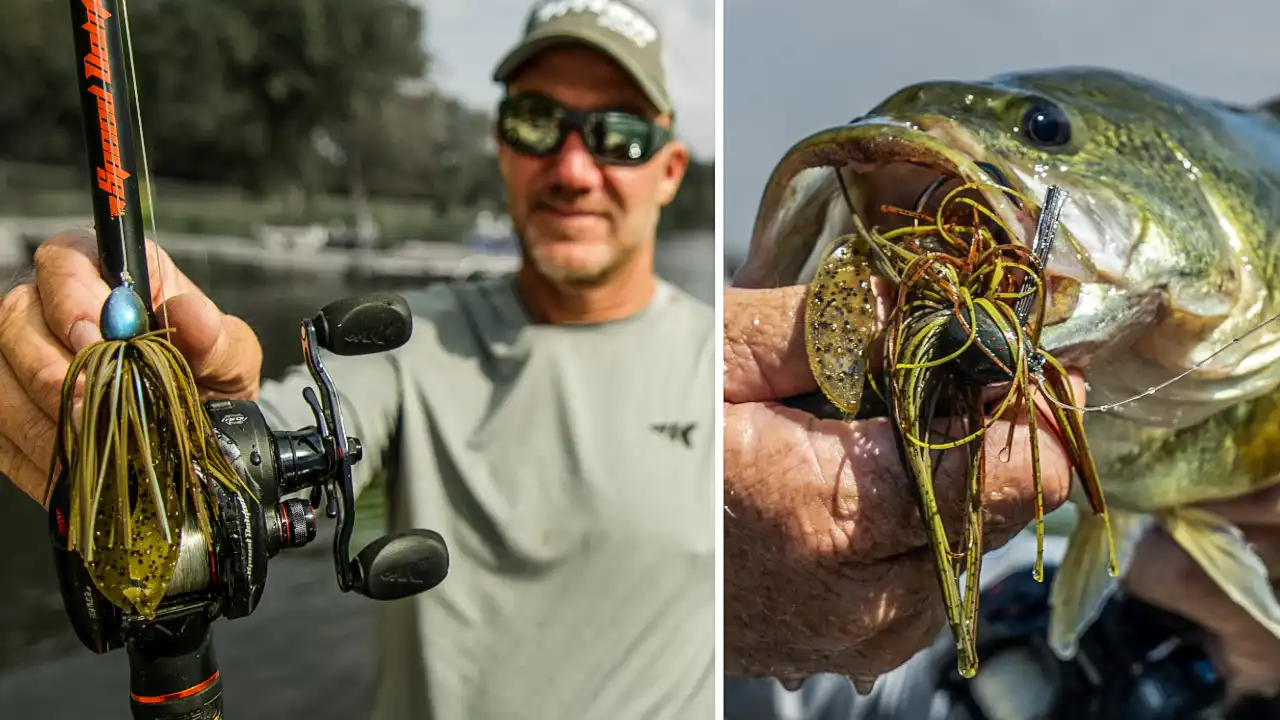Join Brett Chapman as he takes to a maze of docks and other shoreline cover armed with a heavy flipping jig. In an environment where the bass are scattered and hard to pattern, Chapman often flips and pitches a 1oz jig, significantly heavier than the standard 3/8 to 5/8 ounce typically used by many anglers. This tactic isn’t just about weight; it’s a strategic decision to cover more water efficiently and keep the bait in the strike zone longer.
TACKLE USED (retail links)
- JIG – Strike King Hack Attack Jig (1oz), color – Green Pumpkin: Buy at Bass Pro Shops, Buy at Tackle Warehouse
- TRAILER – Zoom Super Chunk: Buy at Bass Pro Shops, Buy at Tackle Warehouse
- ROD – KastKing Speed Demon Pro Tournament Series Fishing Rod, Model Type: Casting / 7’5″ / Fast-Heavy-Flippin-1PC: Buy at KastKing
- REEL – KastKing Speed Demon Elite Casting Reel, 10.5:1: Buy at Tackle Warehouse, Buy at Amazon
- LINE – Gamma Edge Fluorocarbon Line, 20-pound: Buy at Tackle Warehouse
STEALTH AND SPEED: THE POWER FISHING APPROACH
Chapman’s approach is all about stealth and speed. He maintains an efficient pace using a high-speed reel with a heavy jig, allowing for rapid casts and quicker returns to the strike zone. This method is especially effective where there are loads of targets around you, and your goal is to drop a bait in as many places as possible in the shortest time.
TECHNIQUE DETAILS: MAXIMIZING EVERY CAST
The technique Chapman employs involves pitching the heavy jig to the edge of docks and letting it sink, allowing only a moment for the bass to react. This triggers reaction strikes, which is key in power fishing. Chapman emphasizes that speed is crucial; by fishing faster, he quickly moves through unproductive areas to focus on spots more likely to hold aggressive bass.
VERSATILITY IN COVER AND DEPTH
Chapman’s heavy jig setup proves versatile and effective in shallow and deeper waters, around docks, water willows, and other structures. By employing this method, he can effectively fish deep and shallow areas, making his approach adaptable to various lake conditions.
Brett Chapman’s heavy jig strategy for bass excels when you’re looking to maximize efficiency on the water. His methodical yet fast-paced approach demonstrates the importance of adapting to the environment, using the right equipment, and understanding bass behavior.












